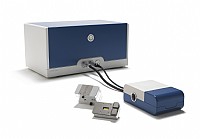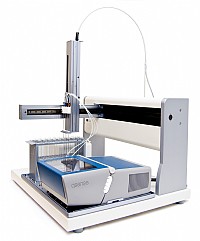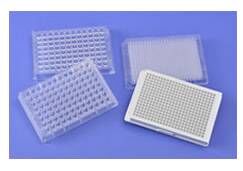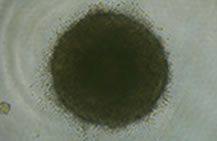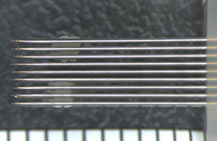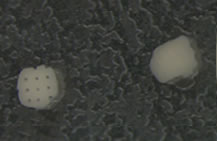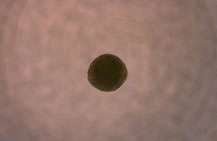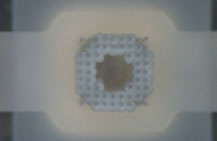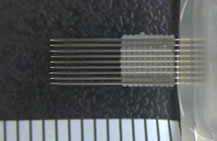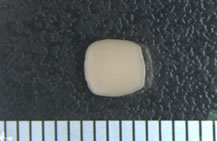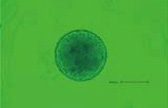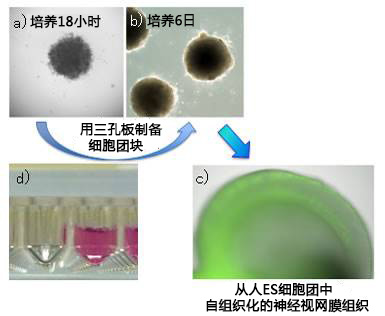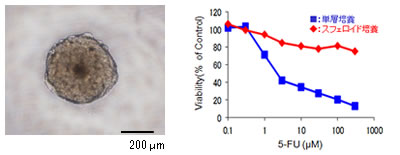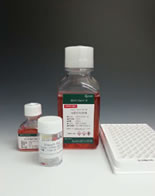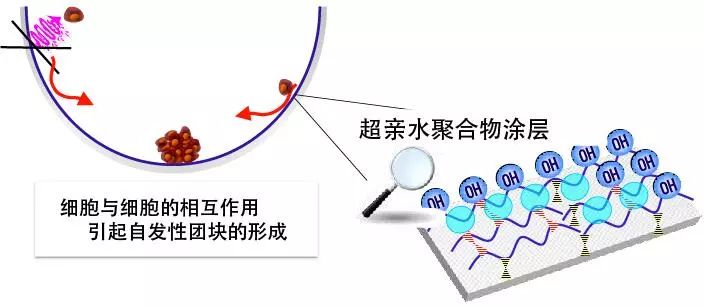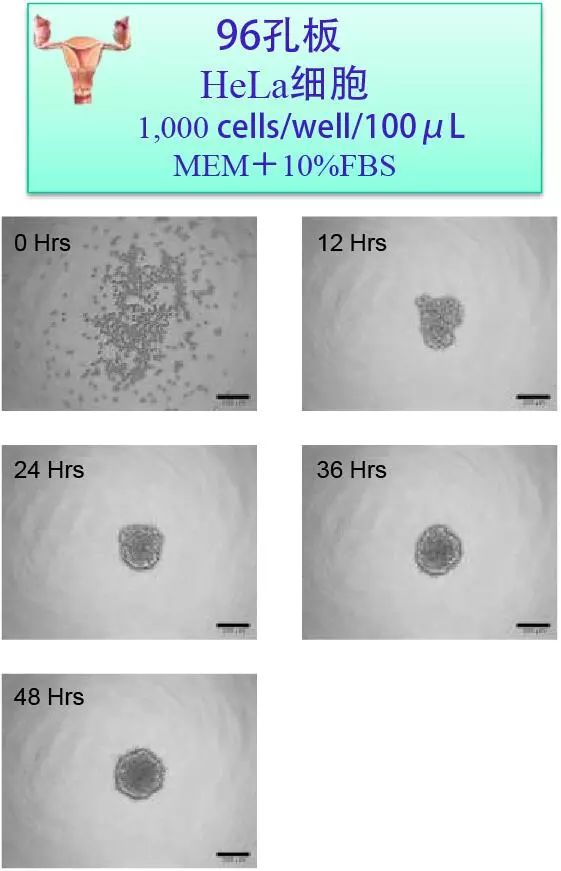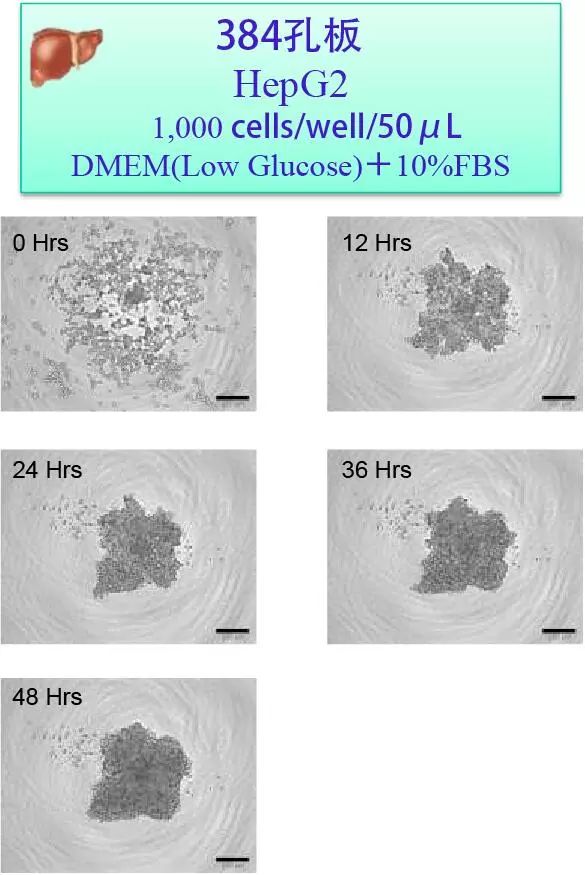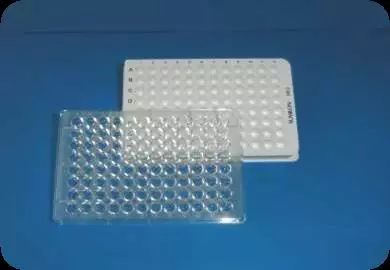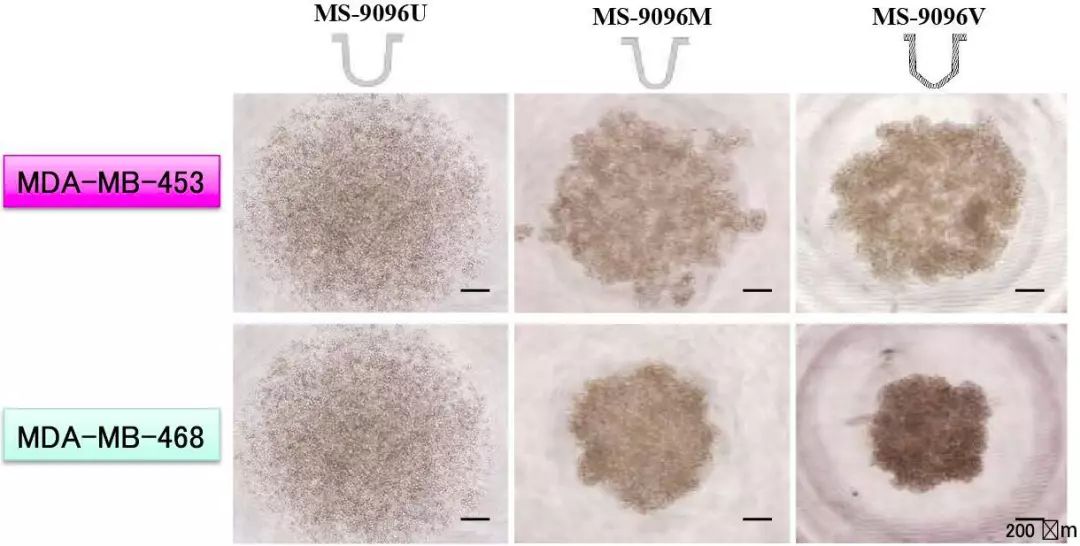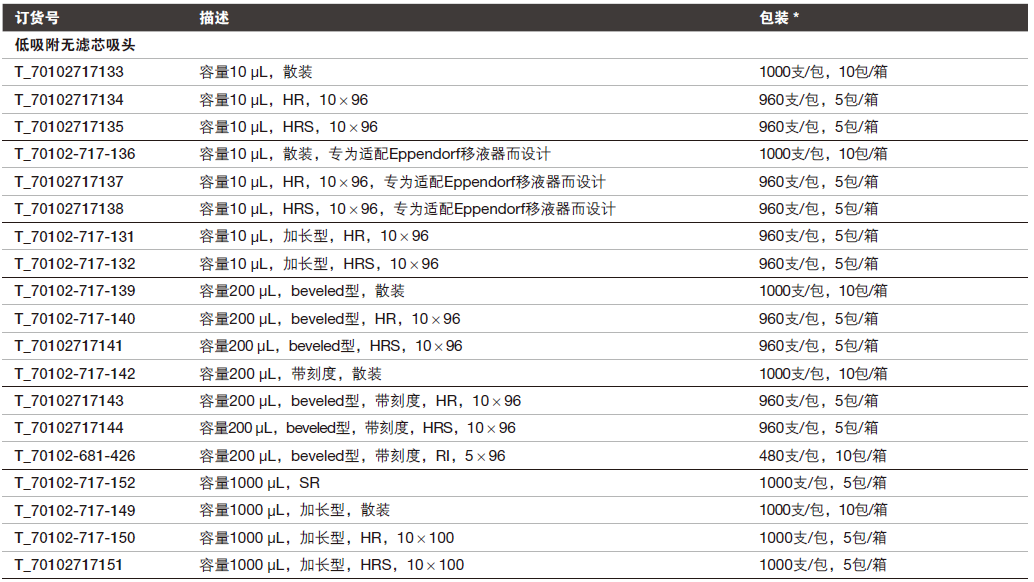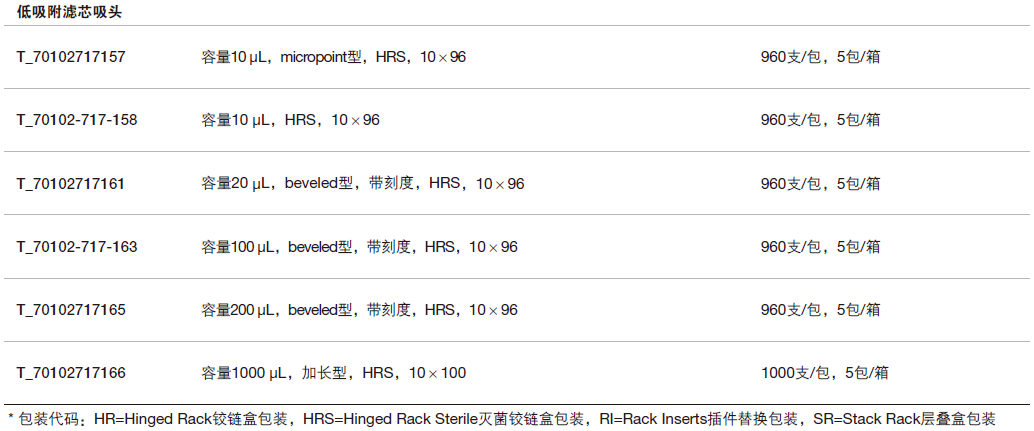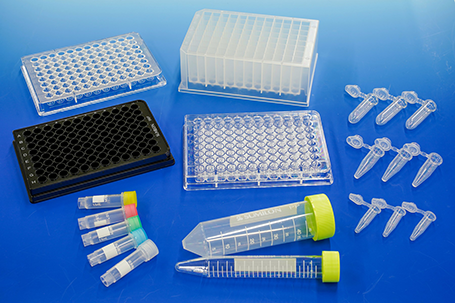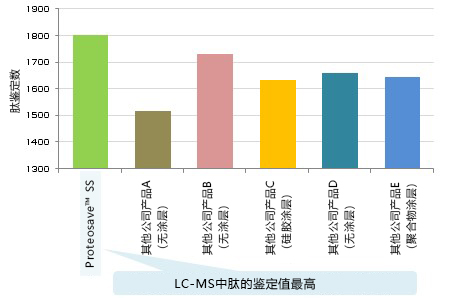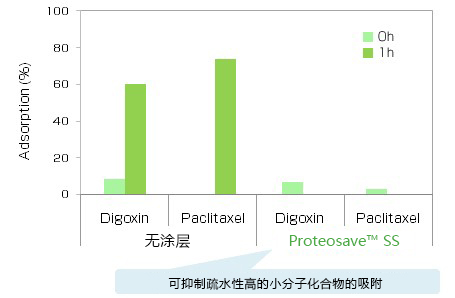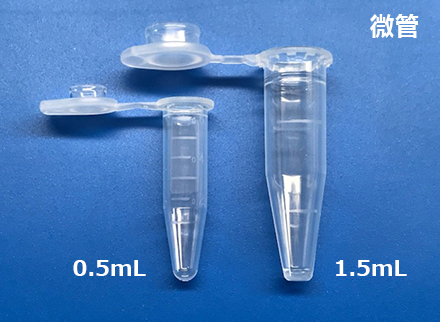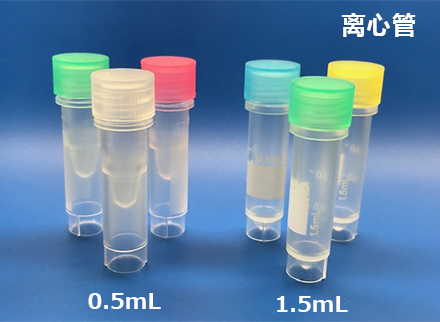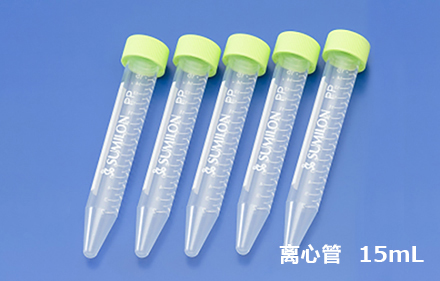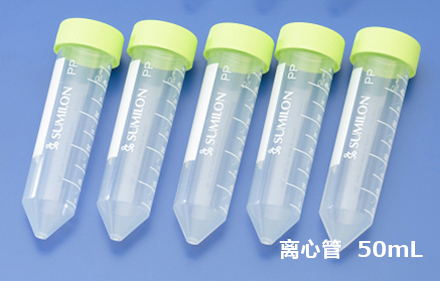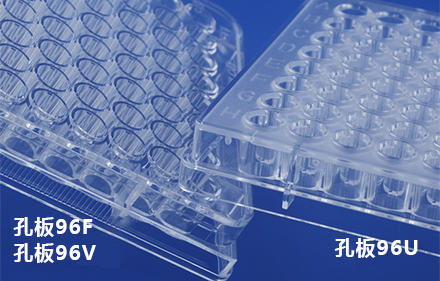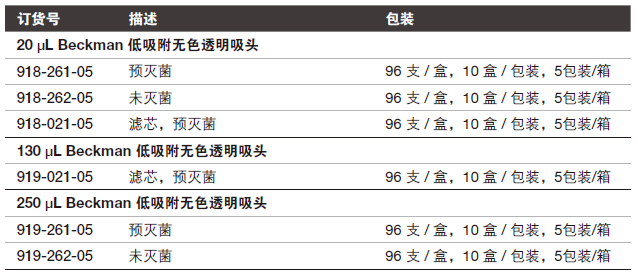|
研究领域
|
使用型号
|
参考文献
|
|
视网膜
研究
|
MS-9096V
|
KUWAHARA, Atsushi, et al. Generation of a ciliary margin-like stem cell niche from self-organizing human retinal tissue. Nature communications, 2015, 6.: 1-15
|
|
MS-9096V
|
TANAKA, T., et al. Generation of retinal ganglion cells with functional axons from human induced pluripotent stem cells. Sci Rep, 2015, 5. 8344.
|
|
MS-9096U
|
EIRAKU, Mototsugu and SASAI, Yoshiki Mouse embryonic stem cell culture for generation of three-dimensional retinal and cortical tissues. Nature protocols,
2012, 7. 1: 69-79.
|
|
MS-9096V
|
NAKANO, Tokushige, et al. Self-Formation of Optic Cups and Storable Stratified Neural Retina from Human ESCs. Cell Stem Cell, 2012, 10. 6: 771-785.
|
|
MS-9096V
|
GAO, Lixiong, et al. Intermittent high oxygen influences the formation of neural retinal tissue from human embryonic stem cells.Scientific Reports, 2016, 6.
|
|
神经科学
研究
|
MS-9096V
|
MUGURUMA, Keiko, et al. Self-Organization of Polarized Cerebellar Tissue in 3D Culture of Human Pluripotent Stem Cells. Cell Reports, 2015, 10:537-550
|
|
MS-9096V
|
BAMBA, Y., et al. Differentiation, polarization, and migration of human induced pluripotent stem cell-derived neural progenitor cells co-cultured with a human glial cell line with radial glial-like characteristics. Biochem Biophys Res Commun, 2014, 447. 4: 683-688.
|
|
MS-9096 U, M or V
|
MINAMINO, Yuki, et al. Isolation and Propagation of Neural Crest Stem Cells from Mouse Embryonic Stem Cells via Cranial Neurospheres. Stem cells and development, 2014, 24.2: 172-181
|
|
MS-9096V
|
KADOSHIMA, T., et al. Self-organization of axial polarity, inside-out layer pattern, and species-specific progenitor dynamics in human ES cell-derived neocortex. Proceedings of the National Academy of Sciences of the United States of America, 2013, 110. 50: 20284-20289.
|
|
MS-9096 U, M or V
|
OGAWA, Yasuhiro, et al. Impaired neural differentiation of induced pluripotent stem cells generated from a mouse model of Sandhoff disease. PLoS ONE, 2013, 8. 1: e55856.
|
|
MS-9035X
|
GOMI, Masanori, et al. Functional recovery of the murine brain ischemia model using human induced pluripotent stem cell-derived telencephalic progenitors. Brain research, 2012, 1459. 52-60.
|
|
MS-9096 U, M or V
|
NASU, Makoto, et al. Robust formation and maintenance of continuous stratified cortical neuroepithelium by laminin-containing matrix in mouse ES cell culture. PLoS ONE, 2012, 7. 12: e53024.
|
|
MS-9096 U
|
DANJO, T., et al. Subregional specification of embryonic stem cell-derived ventral telencephalic tissues by timed and combinatory treatment with extrinsic signals. The Journal of neuroscience : the official journal of the Society for Neuroscience, 2011, 31. 5: 1919-1933.
|
|
MS-9096 U
|
KANEMURA, Yonehiro Development of cell-processing systems for human stem cells (neural stem cells, mesenchymal stem cells, and iPS cells) for regenerative medicine. The Keio journal of medicine, 2010, 59. 2: 35-45.
|
|
MS-9096 U, M or V
MS-9035X, MS-9060X
or
MS-9090X
|
FUKUSUMI, Hayato, et al. (2016). Establishment of human neural progenitor cells from human induced pluripotent stem cells with diverse tissue. Stem cells international: 1-10.
|
|
MS-9096 U, M or V
|
RAASCH, Martin, et al. (2016). An integrative microfluidically supported in vitro model of an endothelial barrier combined with cortical spheroids simulates effects of neuroinflammation in neocortex development. Biomicrofluidics. 10: 044102.
|
|
MS-9096 M
|
ISODA, Miho, et al. (2016). Robust production of human neural cells by establishing neuroepithelial-like stem cells from peripheral blood mononuclear cell-derived feeder-free iPSCs under xeno-free conditions. Neuroscienc Research.
|
|
MS-9035X, MS-9060X
or
MS-9090X
|
BAMBA, Yohei, et al. (2016). In vitro characterization of neurite extension using induced pluripotent stem cells derived from lissencephaly patients with TUBA1A missense mutations. Molecular brain.
|
|
MS-9096V
|
SAKAGUCHI, Hideya, et al. (2015). Generation of functional hippocampal neurons from self-organizing human embryonic stem cell-derived dorsomedial telencephalic tissue. Nature communications. 6: 1-11.
|
|
MS-9096V
|
MUGURUMA, Keiko, et al. Self-Organization of Polarized Cerebellar Tissue in 3D Culture of Human Pluripotent Stem Cells. Cell Reports, 2015, 10:537-550
|
|
|
KAMIYA, Daisuke, et al. Intrinsic transition of embryonic stem-cell differentiation into neural progenitors. Nature, 2011, 470. 7335: 503-509.
|
|
心肌细胞
研究和心脏研究
|
MS-9096V
|
TAKASHIMA, Yasuhiro, et al. Resetting transcription factor control circuitry toward ground-state pluripotency in human. Cell, 2014, 158. 6: 1254-1269.
|
|
MS-9035X
|
OTSUJI, Tomomi G, et al. Dynamic link between histone H3 acetylation and an increase in the functional characteristics of human ESC/iPSC-derived cardiomyocytes. PLoS ONE, 2012, 7. 9: e45010.
|
|
MS-9096U
|
SATOSHI, Yasuda, et al. AW551984: a novel regulator of cardiomyogenesis in pluripotent embryonic cells. Biochemical Journal, 2011, 437. 2: 345-355.
|
|
MS-9096U
|
YASUDA, S., et al. A novel regulator of cardiomyogenesis in pluripotent embryonic cells. The Biochemical journal, 2011, 437. 2: 345-355.
|
|
MS-9096U
|
OTSUJI, Tomomi G, et al. Progressive maturation in contracting cardiomyocytes derived from human embryonic stem cells: Qualitative effects on electrophysiological responses to drugs. Stem cell research, 2010, 4. 3: 201-213.
|
|
MS-9035X, MS-9060X or MS-9090X
|
YAMAUCHI, Kaori, et al. Cardiomyocytes develop from anterior primitive streak cells induced by β‐catenin activation and the blockage of BMP signaling in hESCs. Genes to Cells, 2010, 15. 12: 1216-1227.
|
|
MS-9096V
|
GUO, Ge, et al. (2016). Naive pluripotent stem cells derived directly from isolated cells of the human innercell mass. Stem Cell Reports. 6: 437-446.
|
|
MS-9096 U
MS-9035X, MS-9060X
or
MS-9090X
|
NOGUCHI, Ryo, et al. (2016). Development of a three-dimensional pre-vascularized scaffold-freecontractile cardiac patch for treating heart disease. The Journal of Heart and Lung Transplantation. 35: 137-145.
|
|
MS-9096
|
NOGUCHI, Ryo, et al. Development of a Three-Dimensional Prevascularized Scaffold-Free Contractile Cardiac Patch for Treating Heart Disease. The Journal of Heart and Lung Transplantation, 2015,
|
|
肝细胞
研究
|
MS-9096 U, M or V
|
ISHII, Takamichi (2012). Differentiation of Human Embryonic Stem Cells into Functional Hepatocyte-Like Cells (Method). Stem Cells and Cancer Stem Cells, Volume 2, Springer: 43-49.
|
|
MS-9096 U, M or V
|
ISHII, Takamichi et al. (2012). Hepatic Maturation of hES Cells by Using a Murine Mesenchymal Cell Line Derived from Fetal Livers.Human Embryonic and Induced Pluripotent Stem Cells, Springer: 397-403.
|
|
MS-9096U
|
ISHII, Takamichi, et al. In vitro hepatic maturation of human embryonic stem cells by using a mesenchymal cell line derived from murine fetal livers. Cell and tissue research, 2010, 339. 3: 505-512.
|
|
MS-9096U
|
YANAGIDA, Ayaka, et al. Liver maturation deficiency in p57 Kip2-/-mice occurs in a hepatocytic p57 Kip2 expression-independent manner. Developmental biology, 2015,
|
|
牙科
研究
|
MS-9035X, MS-9060X or MS-9090X
|
OZEKI, Nobuaki, et al. Differentiation of Human Skeletal Muscle Stem Cells into Odontoblasts Is Dependent on Induction of α1 Integrin Expression.Journal of Biological Chemistry, 2014, 289. 20: 14380-14391.
|
|
MS-9096 U, M or V
|
YAMAMOTO, Mioko, et al. Three-dimensional spheroid culture promotes odonto/osteoblastic differentiation of dental pulp cells.Archives of oral biology, 2014, 59. 3: 310-317.
|
|
生精小管
研究
|
MS-9096V
|
YOKONISHI, T., et al. In Vitro Reconstruction of Mouse Seminiferous Tubules Supporting Germ Cell Differentiation. Biol Reprod, 2013, 89. (1):15: 1–6.
|
|
iPS细胞
生成
|
MS-9035X
|
OHNISHI, Hiroe, et al. A comparative study of induced pluripotent stem cells generated from frozen, stocked bone marrow‐and adipose tissue‐derived mesenchymal stem cells. Journal of tissue engineering and regenerative medicine, 2012, 6. 4: 261-271. 1.
|
|
MS-9035X
|
AOKI, T., et al. Generation of induced pluripotent stem cells from human adipose-derived stem cells without c-MYC. Tissue engineering. Part A, 2010, 16. 7: 2197-2206.
|
|
MS-9035X, MS-9060X or MS-9090X
|
ODA, Y., et al. Induction of pluripotent stem cells from human third molar mesenchymal stromal cells. J Biol Chem, 2010, 285. 38: 29270-29278.
|
|
|
OHNISHI, Hiroe, et al. Generation of Xeroderma Pigmentosum-A Patient-Derived Induced Pluripotent Stem Cell Line for Use As Future Disease Model. Cellular Reprogramming (Formerly" Cloning and Stem Cells"), 2015, 17. 4: 268-274.
|
|
EST(胚胎干细胞试验)
|
MS-9096W
|
SUZUKI, N., et al. Evaluation of novel high-throughput embryonic stem cell tests with new molecular markers for screening embryotoxic chemicals in vitro. Toxicological sciences : an official journal of the Society of Toxicology, 2011, 124. 2: 460-471.
|
|
MS-9096U
|
NAGAHORI, H., et al. (2016). Prediction of in vivo developmental toxicity by combination of Hand1-Luc embryonic stem cell test and metabolic stability test with clarification of metabolically inapplicable candidates. Toxicol Lett. 259: 44-51.
|
|
MS-9096U
|
YU, Ruoxing, et al. (2015). A Modified Murine Embryonic Stem Cell Test for Evaluating the Teratogenic Effects of Drugs on Early Embryogenesis. PLoS ONE. 10: e0145286.
|
|
MS-9096W
|
COZ, Florian Le, et al. (2015). Hand1-Luc Embryonic Stem Cell Test (Hand1-Luc EST): A novel rapid and highly reproducible in vitro test for embryotoxicity by measuring cytotoxicity and differentiation toxicity using engineered mouse ES cells. The Journal of Toxicological Sciences. 40: 251-261.
|
|
骨和软骨研究
|
MS-9096 U
|
HINO, Kyosuke, et al. (2015). Neofunction of ACVR1 in fibrodysplasia ossificans progressiva. Proceedings ofthe National Academy of Sciences. 112: 15438-15443.
|
|
MS-9096 U, M or V
|
MURATA, Daiki, et al. A preliminary study of osteochondral regeneration using a scaffold-free threedimensional construct of porcine adipose tissue-derived mesenchymal stem cells. Journal of orthopaedic surgery and research, 2015, 10. 1: 1-12.
|
|
MS-9096 U, M or V
|
FUJIMOTO, Mai, et al. Establishment of a novel model of chondrogenesis using murine embryonic stem cells carrying fibrodysplasia ossificans progressiva-associated mutant ALK2. Biochemical and Biophysical Research Communications,
2014, 455. 3: 347-352. 1.
|
|
MS-9096 U
|
ISHIHARA, Kohei, et al. Simultaneous regeneration of full-thickness cartilage and subchondral bone defects in vivo using a three-dimensional scaffold-free autologous construct derived from high-density bone marrow-derived mesenchymal stem cells. J Orthop Surg Res, 2014, 9. 1: 98. 1.
|
|
血管
研究
|
MS-9096 U
MS-9035X, MS-9060X
or
MS-9090X
|
KAGEYAMA, Tatsuto, et al. (2016). In situ crosslinkable gelatin-CMC hydrogels designed for rapid engineering of perfusable vasculatures. ACS Biomaterials Science & Engineering.
|
|
MS-9096U
|
ITOH, M., et al. Scaffold-Free Tubular Tissues Created by a Bio-3D Printer Undergo Remodeling and Endothelialization when Implanted in Rat Aortae.PLoS ONE,
2015, 10. 9: e0136681.
|
|
胰岛细胞移植
|
MS-9096 U
|
NAKAMURA, Kentaro, et al. (2016). Introduction to a new cell transplantation platform via recombinant peptide petaloid pieces and its application to islet transplantation with mesenchymal stem cells. Transplant International. 29: 1039-1050.
|
|
骨髓
研究
|
MS-9096 U
|
SAYO, Kanae, et al. (2016). Fabrication of bone marrow-like tissue in vitro from dispersed-state bone marrow cells. Regenerative Therapy. 3: 32-37.
|
|
其它
|
MS-9035X, MS-9060X
or
MS-9090X
|
ITO, Yoshitaka, et al. (2015). Establishment of Tsc2‑deficient rat embryonic stem cells. International journal of oncology. 46: 1944-1952.
|
|
MS-9096 U, M or V
|
OGAWA, Yasuhiro, et al. (2015). Induced Pluripotent Stem Cells Generated from P0-Cre; Z/EG Transgenic Mice. PLoS ONE. 10: e0138620.
|
|
MS-9096U
|
IMAI, Hiroyuki, et al. Tetraploid Embryonic Stem Cells Maintain Pluripotency and Differentiation Potency into Three Germ Layers. PLoS ONE, 2015, 10. 6: e0130585.
|
|
MS-9096U, MS-9096M
or
MS-9096V
|
MITSUI, Kaoru, et al. Conditionally replicating adenovirus prevents pluripotent stem cell–derived teratoma by specifically eliminating undifferentiated cells. Molecular Therapy. Methods & Clinical Development, 2015, 2. 15026.
|
|
MS-9096U
|
ZHOU, Yuanshu, et al. Metabolic suppression during mesodermal differentiation of embryonic stem cells identified by single-cell comprehensive gene expression analysis. Molecular BioSystems, 2015, 11. 9: 2560-2567.
|
